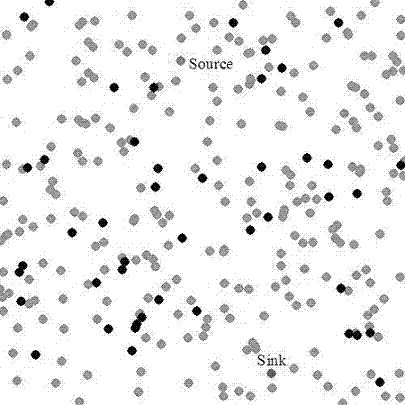Two-hop multipath routing method for wireless sensor networks based on energy harvesting technology
A wireless sensor and energy harvesting technology, applied in advanced technology, wireless communication, sustainable communication technology, etc., can solve the problems of no nodes, poor link reliability, insufficient consideration of wireless sensor nodes, etc., to reduce The effect of energy consumption, prolonging life and avoiding routing holes
- Summary
- Abstract
- Description
- Claims
- Application Information
AI Technical Summary
Problems solved by technology
Method used
Image
Examples
Embodiment Construction
[0034] Specific embodiments of the present invention will be further described in detail below.
[0035] The present invention will be further described below in conjunction with the accompanying drawings. The following examples are only used to illustrate the technical solution of the present invention more clearly, but not to limit the protection scope of the present invention.
[0036] The applied wireless network of the present invention includes a base station and a plurality of nodes, each node includes a wireless sensor, and the node also includes an energy harvesting device. Replenish energy.
[0037] Such as figure 1 As shown, a flow chart is used to illustrate the establishment process of the multi-path route of the present invention. When the source node has data to send, the source node first checks whether there is an active one-hop neighbor node. If it does not exist, send a non-confirmation frame, return to the previous hop node, and mark the current node as...
PUM
 Login to View More
Login to View More Abstract
Description
Claims
Application Information
 Login to View More
Login to View More - Generate Ideas
- Intellectual Property
- Life Sciences
- Materials
- Tech Scout
- Unparalleled Data Quality
- Higher Quality Content
- 60% Fewer Hallucinations
Browse by: Latest US Patents, China's latest patents, Technical Efficacy Thesaurus, Application Domain, Technology Topic, Popular Technical Reports.
© 2025 PatSnap. All rights reserved.Legal|Privacy policy|Modern Slavery Act Transparency Statement|Sitemap|About US| Contact US: help@patsnap.com



